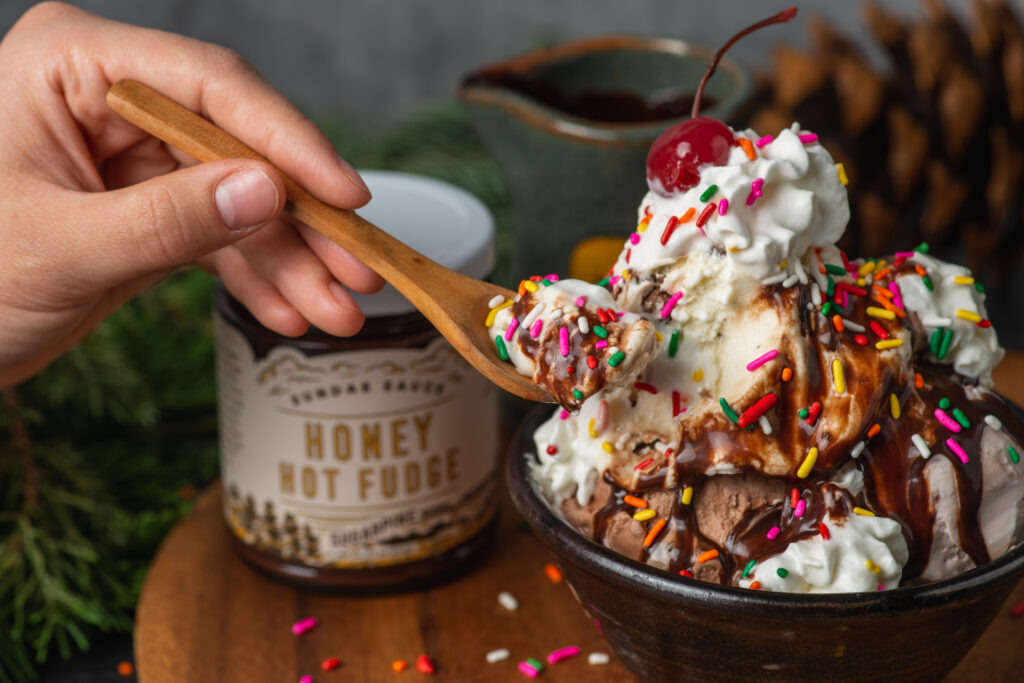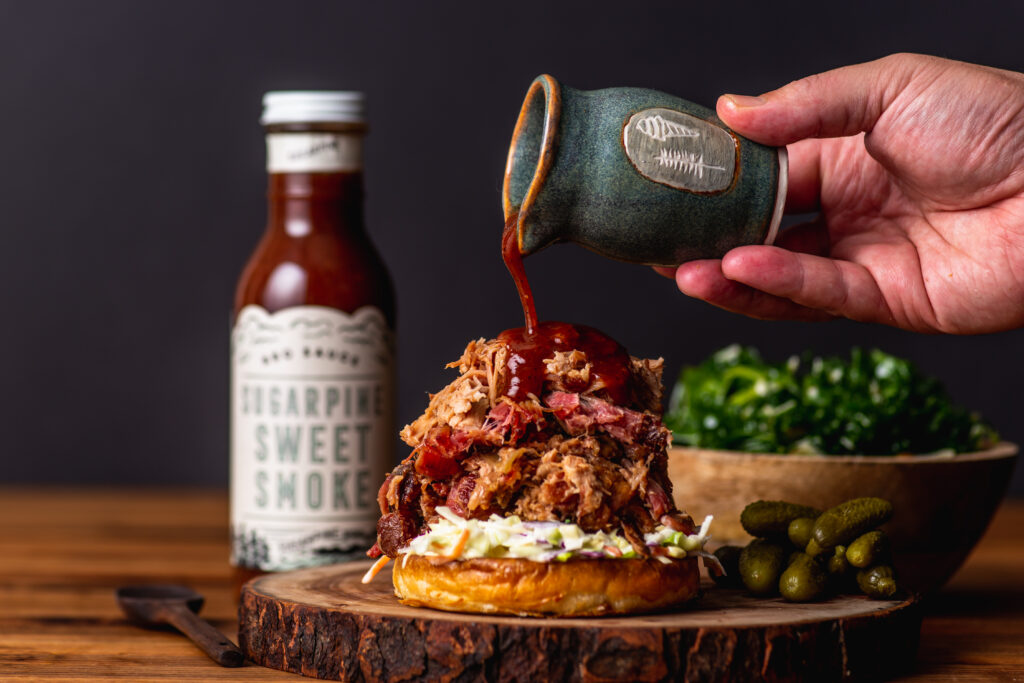Sugarpine Drive-In in Troutdale, Oregon, Shares its Experience Building a Retail Line from its Signature Menu
Whether creating meal kits or bottling products to sell—restaurants across the country turned to retail so they could better reach their customers during the pandemic.
While restaurants have been able to operate at total capacity for a while now, many still sell their products online, in stores, and on-premise.
Merchandising adds a whole other level to your business—so there must be some benefits. Otherwise, restaurants would have called it quits by now, right?
We spoke with Ryan Domingo, who, with his wife and partner Emily Cafazzo, owns and operates the beloved destination spot at the edge of the Columbia Gorge: Sugarpine Drive-in.
Like everyone else, during the pandemic, Ryan and Emily sought alternatives to keep their staff employed and generate revenue for their business.
They turned to Oregon State University (OSU) and its Food Innovation program in Portland, Oregon, to work on shelf-stable recipes for their signature sundae sauces, barbeque sauce, and spice rub.
Beyond conceptualizing what might do well for retail, businesses interested in the process should first research local or national food innovation facilities. For Sugarpine, partnering with OSU and local grocery store programs gave them the guidance needed to meet their goals and scale sustainably.
“We took our recipes and reached out to the folks over at OSU for guidance; they work directly with New Seasons and Market of Choice to help small business get their products to a point where they can be sold,” Domingo explained. “We worked with the recipes to modify them so that they had the right sugar and pH levels to be shelf-stable, which we realized would be the best way to sell our products.”

Creating a shelf-stable product was essential for Sugarpine to maintain the level of involvement they were looking for and ensure they were recouping their investment costs.
“If you’re starting from scratch and want to sell a product, consider what categories of retail items have a high sell-through rate,” Domingo shared. “Something we found out is if you really want to make this your full-time job, you want to sell categories that are really moving.”
For example, Domingo shared that sundae sauces are a slow-moving category, emphasizing the need to create shelf-stable products that can last and take time to sell.
Items like hot sauce, frozen pizzas, and ice creams typically move quickly and could withstand a shorter shelf-life but require more commitment to the retail space.
“For us, we came at it with this idea that this was always going to be a marketing tool. We weren’t banking on this moving into a full-time role for us, and that’s made things quite a bit simpler,” Domingo shared.
Additionally, weighing the costs and level of involvement you want to devote to the retail part of your business is essential when considering production and distribution options.
For Sugarpine, creating a recipe that could be handed off to a co-packer who then makes, bottles, and sends the product off to a distributor was the best option.
“For our product line, we wanted it to be something we could work with a co-packer on so that we didn’t have to make it in-house because we just don’t have the space,” Domingo shared. “We built easily manageable recipes for that co-packer to execute but also exciting and shareable and had local ingredients.”
Initially, Domingo and Cafazzo did delivery runs themselves but quickly learned that it took too much time and was not feasible. They now work with a distributor to receive their orders from the co-packer and deliver them to the retail stores.
Restaurants looking to get into retailing hold some advantage over other businesses in that they can test their products in-store to see how items sell and generate feedback on what works before diving too deep into any one production.
“Since we own the drive-in, we had a place where we could package products, sell them, get feedback and see what was selling, see what needed to change to get them to sell and sort of test consumer interest in real-time,” Domingo said. “Not a lot of small businesses have that, and in order to get it, they’re at farmer’s markets or doing tastings all over the place for months and months and months. We didn’t really have to do that.”

In all, it took about 12 months for Sugarpine to connect with OSU, go to production and get their product line on the shelves of local natural grocery stores like New Seasons, Market of Choice, and other boutique retail stores.
“It’s certainly worth it to us just for brand exposure. To be positioned in these natural grocery stores that our clientele frequent but maybe don’t make it out as much as they’d like,” Domingo stated. “We are being introduced to a wider audience than just the people who come to the restaurant, so that’s great.”
Known for what they like to call a “Farm to Drive-in” inspired menu, Sugarpine has become a must for anyone visiting near or far.
Cafazzo and Domingo are passionate about their food community and source their take on American comfort food through local farmers. They hope the drive-in encourages visitors to enjoy Oregon’s beautiful nature and reimagine what food can be like in a to-go-friendly dive-thru format.
They made sure this value was upheld even in their retail product line.
“It keeps us going through the tough times of the evolution of restaurants over the last few years, and how much harder it is to keep a business like ours open,” Domingo shared. “Having a business and products that people feel are synonymous with their Oregon experience is really cool for us. It’s hard to explain how rewarding it is to have people say, ‘my family is in town, and I told them we had to go to Sugarpine while they were here.’ That’s really why we wanted to do this.”
Sugarpine’s Miso Carmel, Honey Hot Fudge, and Blueberry Lavender Sundae Sauces, their Sweet Smoke BBQ Sauce, and Northwest Wonder Rub Barbeque Spice blend are now available online, in-store, and on shelves of local Oregon grocery stores and boutiques nationwide.
Ryan and Emily at Sugarpine prove that you don’t have to be a large restaurant group or make retailing a full-time gig to reap the benefits.
The brand exposure alone allows your business to reach customers where they are, bring some excitement and joy to their homes, and build new brand loyalty along the way!
